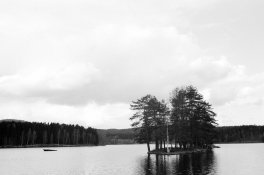mackinto2000
Member
I'm puzzled by the published development times for FP4+ in HC-110, all of which seem way too long. I'e been doing some tests at a dilution of 1:49 with the following results:
Here's a scan of one of the negatives, with the scan adjusted to show the full tonal range, and with the metered Exposure Values shown. I exposed for EV12 at ISO 100, putting EV10 into the shadows.
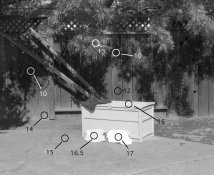
Here's my first negative, HC-110 1:49, 5 minutes at 20 degrees C. It was printed on grade 2 paper, and the print scanned in:
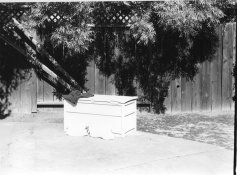
Four stops on from EV12, the box in the middle of the image is basically pure white, and look like zone 9 to me, or possibly zone 8, with the ground next to it in zone 7.
Here's my second negative, same dilution and temperature, for 7 minutes, and again on grade 2 paper:
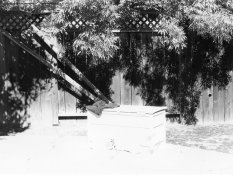
The ground by the box is almost completely blown out, and the fence to the left, at EV14, is looking more like zone 8 than zone 7 to me. Given this, I'd say that 7 minutes is the absolute maximum for normal development, and maybe a bit too overdeveloped.
Note that shadow detail seems about the same in both prints. Here's the 5 minutes:
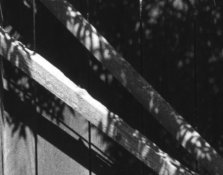
And the 7 minutes:
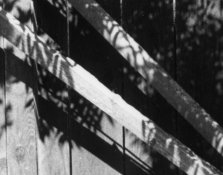
See the vertical dark line that shows the gaps between two of the planks. It's just about visible in both prints.
The times I'm using seem a lot shorter that the various times on things like the Massive Dev Chart or Ilford's own site, but if the aim is to get controllable highlights when printing on grade 2 paper, I don't see how those longer times are going to work. Does anyone else have any experience with developing negatives for the darkroom, as opposed to scanning?
Thanks,
Alasdair
Here's a scan of one of the negatives, with the scan adjusted to show the full tonal range, and with the metered Exposure Values shown. I exposed for EV12 at ISO 100, putting EV10 into the shadows.

Here's my first negative, HC-110 1:49, 5 minutes at 20 degrees C. It was printed on grade 2 paper, and the print scanned in:

Four stops on from EV12, the box in the middle of the image is basically pure white, and look like zone 9 to me, or possibly zone 8, with the ground next to it in zone 7.
Here's my second negative, same dilution and temperature, for 7 minutes, and again on grade 2 paper:

The ground by the box is almost completely blown out, and the fence to the left, at EV14, is looking more like zone 8 than zone 7 to me. Given this, I'd say that 7 minutes is the absolute maximum for normal development, and maybe a bit too overdeveloped.
Note that shadow detail seems about the same in both prints. Here's the 5 minutes:

And the 7 minutes:

See the vertical dark line that shows the gaps between two of the planks. It's just about visible in both prints.
The times I'm using seem a lot shorter that the various times on things like the Massive Dev Chart or Ilford's own site, but if the aim is to get controllable highlights when printing on grade 2 paper, I don't see how those longer times are going to work. Does anyone else have any experience with developing negatives for the darkroom, as opposed to scanning?
Thanks,
Alasdair
Last edited by a moderator:








